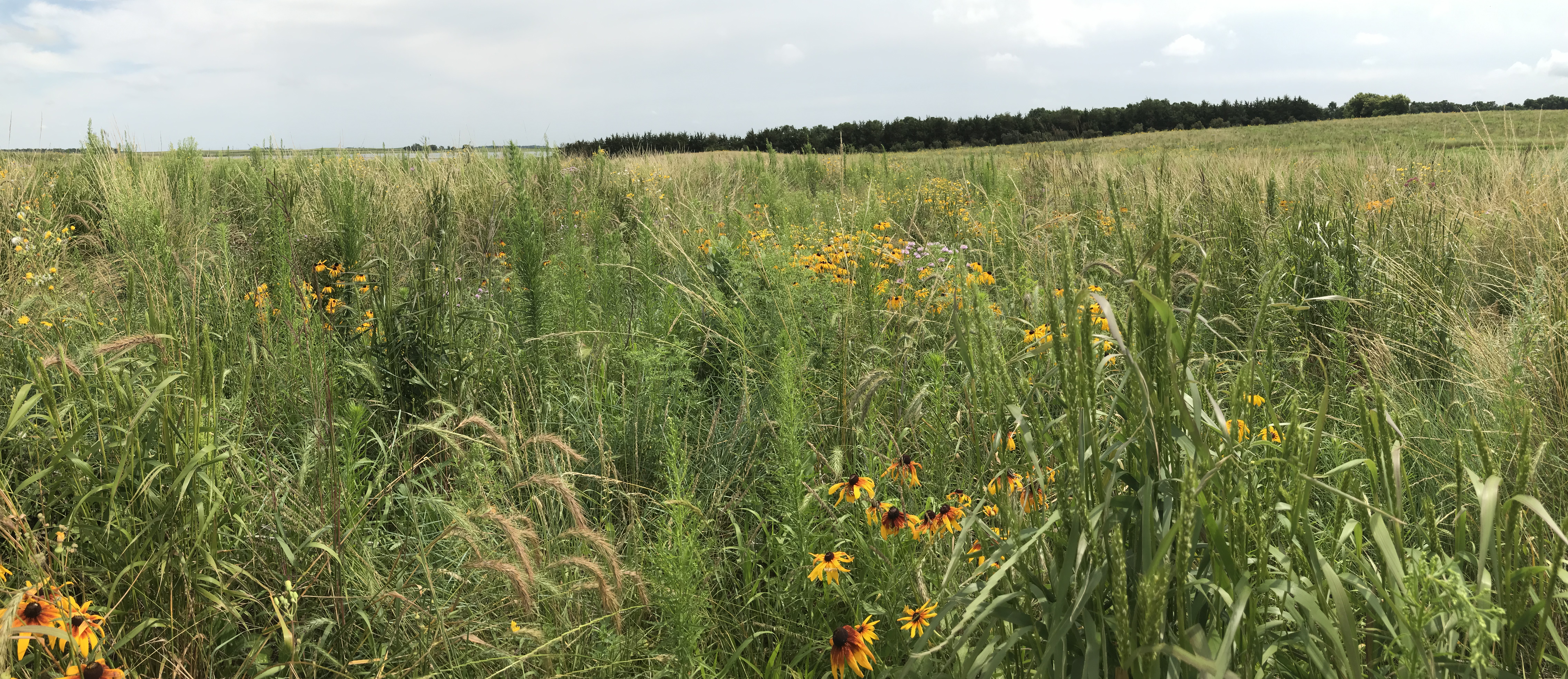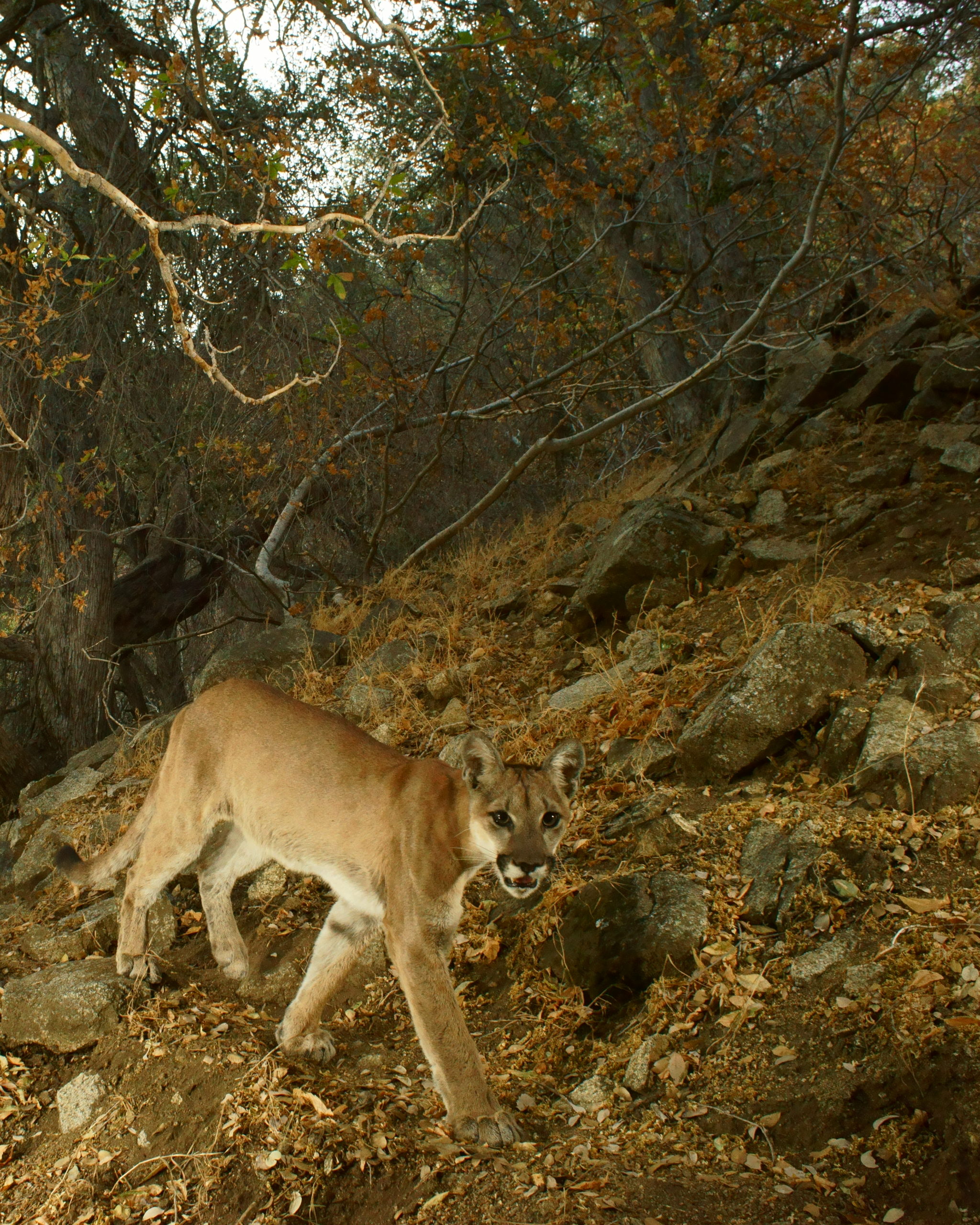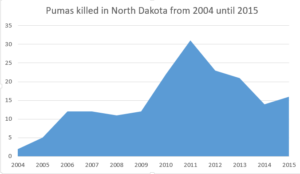Native Peoples
As an apex predator of the Great Plains, mountain lions were an important part of Native American culture in North Dakota, revered as an intelligent and mighty hunter. The Plains Indians coexisted with mountain lions and lions were hunted only to provide resources for clothing and ceremonial purposes. Mountain lions also brought rich substance to local myths and legends with their great hunting skill and prowess.
Mountain lions inhabited the badlands and Missouri Breaks areas of North Dakota as well as the riparian and wooded areas throughout the state. They may have roamed the grasslands, depending on whether the landscape provided suitable cover for their ambush hunting style, pursuing their preferred prey, elk and deer. Mountain lions would not have had the strength and size to hunt bison, who numbered in the millions at that time and would have been fierce and potentially deadly opponents.
The tribes who lived on the territory of what is now North Dakota included the Arapaho, Arikara, Cheyenne, Chippewa, Crow, Dakota Sioux, Hidatsa and Mandan. The Chippewa have a Cougar Clan whose totem is called ‘Misibizhiw.’ These people generally lived a nomadic hunting lifestyle, following the vast bison herds that roamed the Great Plains at that time.
From the 1830s to the 1880s a large U.S. federal territory on the Great Plains was set aside as ‘Indian Territory’ in an attempt to clear land for white settlers as they moved westward. The Great Plains tribes depended absolutely upon the bison for food, shelter and clothing and in the 1870s the U.S. government perpetrated a giant slaughter of the northern buffalo herds in an attempt to destroy the Great Plains tribal lifestyle once and for all.
Fur Trading Period
Native fur bearers have always played an important role in human development and survival. Pelts, teeth and claws have been used by Native Americans for centuries for clothing, decoration, rugs, shelter, tools, and ceremonial uses among other things. Before European settlement of North Dakota, fur bearers were abundant.
While the beaver was the most trapped furbearer, all species were fair game, including mountain lions, trapped mainly as a ‘nuisance’ animal though skins could bring a moderate price . A ‘Newhouse 14’ trap was big enough to trap mountain lions and also wolves. The trap was heavy and nineteen inches long, enough cold gripping steel to hold a lion until the trapper could check his lines and kill the animal.
The abundance of furbearer species was what opened up North Dakota to the fur trade. Almost every settler who came to North Dakota in the early years of its development came because of fur trapping and trading interests. One of the main objectives of the Lewis and Clark expedition in 1804-05 was to gather information on furbearers – species, abundance and distribution. (North Dakota Furtakers Educational Manual) Throughout the fur trade era, beaver pelts were in the highest demand in the Eastern U.S., Europe and China.
By the 1850s, the fur trade era was largely over. At the peak of the fur trade industry in the U.S., profits usually ran more than 100%. A few men became rich and the Native Americans upon whom the fur trade largely depended lost their way of life to the westward settlement of incoming Europeans.
The trapping industry across the United States reinforced a culture where all furbearers, including mountain lions, were treated simply as commodities with no thought to their sentience, to their role and value in ecosystems, or to the effects of over-trapping.
Unregulated Hunting
Unlike many other western and inter-mountain states, North Dakota never had a bounty on mountain lions. However, prior to 1991, mountain lions were unprotected and could be killed legally in any numbers at any time. Because the killing of mountain lions was unregulated and there were no bounty rolls that would have kept pay-out records on lion bodies, there is no way to know for certain how many mountain lions were actually killed while the state was being settled. However, population estimates would likely be in the thousands as lions historically lived, hunted and raised their young throughout the state at that time. In 1991, mountain lions were classified as furbearers with a closed season. Policy was created that prohibited the killing of a mountain lion outside a regulated hunting season unless a human life is threatened, or a lion is known to be killing livestock.
Sport and Recreational Hunting
North Dakota’s first mountain lion hunting season opened on September 2, 2005. The season closed early, five months later, on January 15, 2006 when a 4 to 6-month-old, 39-lb. female was reported killed in McKenzie County. The mortality total for this first hunt was 5 mountain lions.
In 2007, North Dakota expanded the sport hunting season for mountain lions to two hunt zones, one of which has no restrictions on how many lions may be killed.
In 2016, the Mountain Lion Foundation, along with thousands of our members and other wildlife and conservation organizations, submitted a letter urging the Director of the North Dakota Game and Fish Department to enact an immediate moratorium on mountain lion hunting in that state. Based on current science, the mountain lion population in North Dakota is too small to sustainably withstand a sport hunting season.




